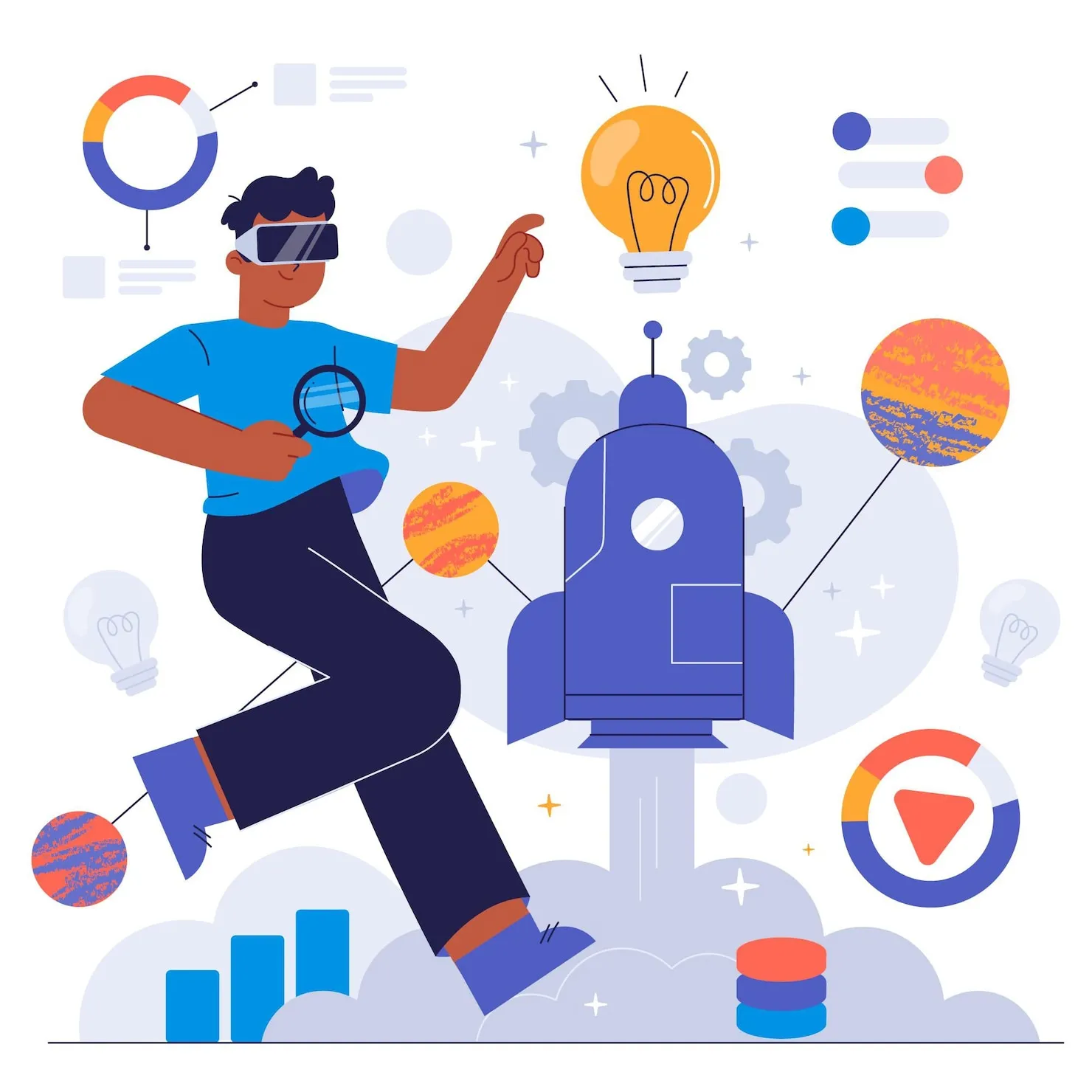10 Game-Changing Design Trends to Watch in 2025
Design in 2025 is set to be more immersive, intelligent, and user-centric than ever before. With AI, AR/VR, and sustainability at the forefront, the design world is shifting from flat, static layouts to highly dynamic experiences. Let’s explore the trends defining the year ahead.
1. AI-Driven Creativity Becomes the Standard
AI is no longer just a support tool. By 2025, it’s powering the creative process itself. Designers are using AI for:
- Generating concept art and prototypes.
- Automating repetitive tasks like resizing assets.
- Personalizing user experiences in apps and websites.
👉 Example: A fintech app using AI to redesign dashboards in real-time based on how users interact with it.
(Related reading: explore how AI tools are transforming design workflows.)
2. Immersive 3D and Spatial Design
With AR glasses and VR platforms gaining momentum, 3D design is becoming a must-have skill. Interfaces are moving beyond screens into spatial environments, where users can interact with products in real time.
- 3D product previews for e-commerce.
- Virtual showrooms for real estate.
- Spatial UI for AR/VR apps.
According to WGSN, immersive 3D will dominate industries like retail and gaming by 2025.
3. Sustainable and Ethical Design
Designers are prioritizing eco-friendly practices and inclusive visuals. Expect to see:
- Dark mode and energy-saving UI.
- Minimalist visuals reducing resource load.
- Accessibility-first color palettes and typography.
👉 Mini case: A tech startup reduced its site’s carbon footprint by 40% after switching to optimized visuals and sustainable hosting.
4. Bold Typography and Experimental Layouts
The era of safe, minimal fonts is fading. In 2025:
- Variable fonts adapt fluidly across devices.
- Oversized headlines dominate landing pages.
- Asymmetry and broken grid layouts add character.
This shift helps brands stand out in crowded markets while keeping the user experience engaging yet functional.
5. Human-Centric Personalization
Instead of generic interfaces, apps and platforms are focusing on personalized micro-experiences.
- Adaptive color themes based on mood detection.
- Contextual design for different demographics.
- Dynamic CTAs that change based on browsing behavior.
(If you’re exploring digital strategy, our guide on UX personalization techniques dives deeper into this shift.)
6. Cross-Device Consistency with Responsive 2.0
Designers are moving beyond “mobile-first.” In 2025, the challenge is consistent experiences across wearables, desktops, AR devices, and smart TVs.
Best practices include:
- Designing flexible grids that scale seamlessly.
- Using adaptive typography for multiple devices.
- Maintaining brand consistency across environments.
Final Thoughts
The design trends for 2025 show a clear direction: smarter, bolder, and more immersive experiences. Whether it’s AI-powered creativity, spatial design, or eco-friendly interfaces, the future belongs to designers who adapt fast.


